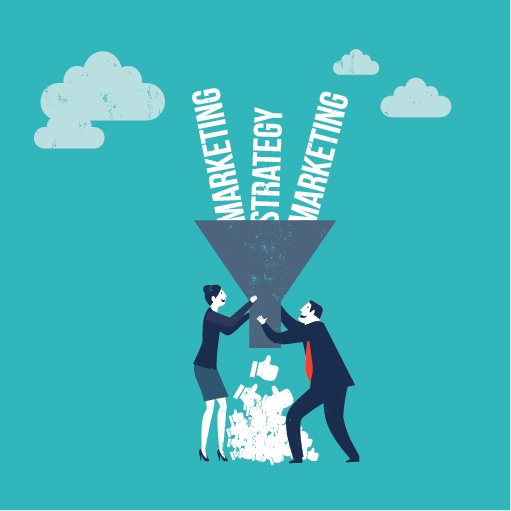Many advanced marketing automation platforms, such as Marketo, can function as a “CRM-lite” through the lead database. It can track a cold prospect from initial contact via a nurture campaign through qualification to turn over to your sales team. Effectively, the marketing automation platform can provide great insight throughout the marketing funnel.
What if you want, however, to track a prospect throughout the entire sales lifecycle? If you have a standalone CRM, such as Salesforce, most advanced marketing automation systems sync seamlessly so that when you update your lead database, your CRM updates simultaneously; additionally, you can use your CRM as the “single source of truth” from which your marketing automation platform pulls prospect data to create lists for email blasts, webinar invitations, etc. This sync creates a two-way street of communication between sales and marketing.
The Marketing Funnel
We’ve published articles about how to incorporate your marketing automation platform into your marketing stack, how to build a lead database without compromising PII, and how to segment leads for campaigns such as email blasts.
If you have a cold prospect, though, marketing automation can help thaw the lead slowly with a nurture, or drip, campaign. This type of campaign is where the “automation” component of your platform excels. You can set the parameters for how often your prospects receive communication, score your prospects, and slowly watch their qualification scores increase as they engage with your content.
Once they’ve reached the qualification scoring threshold set by your marketing team, it’s time to turn them over to sales—as a warm lead now, ready for a phone call or personalized email.




